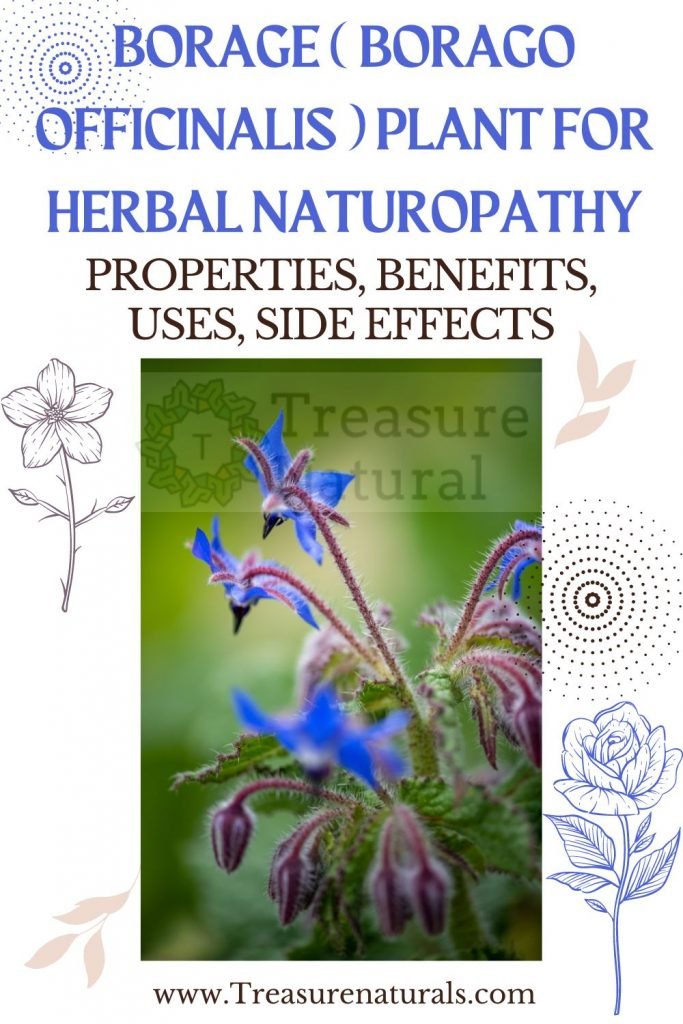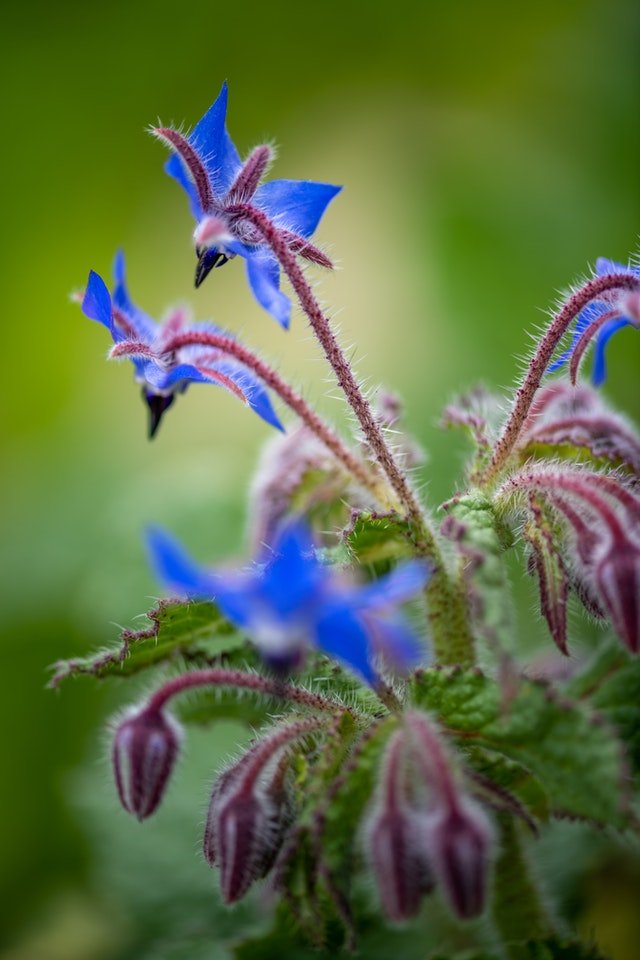
Borage is an antioxidant and anti-inflammatory plant, useful for the heart. What are the properties? Does borage also have any side effects?
Borage (Borago officinalis) is a plant of the Boraginaceae family. Its seeds are rich in polyunsaturated fatty acids and are used for their anti-inflammatory and protective properties of the cardiovascular system. Let’s find out better.
Properties of borage
Borage seeds contain polyunsaturated fatty acids (alpha – linoleic acid 32-38%; linoleic acid 18-25%; oleic acid 15-19%), with anti- inflammatory properties for the tissues, rebalancing the female hormonal system and protecting the system cardiovascular.
From the seeds of the plant, in fact, through a cold pressing process, a vegetable oil is obtained, useful in skin diseases with an allergic component, such as eczema, dermatosis, psoriasis.
Thanks to the presence of phytoestrogens, which perform a rebalancing action of the female hormonal system, this oil is used in herbal medicine in case of cycle irregularities, menstrual pain, amenorrhea, ovarian cysts, to reduce the symptoms of premenstrual syndrome and menopause. Moreover, due to the high content of plant hormones, it is often included in the formulation of products to firm the breasts and for skin disorders and impurities related to the cycle such as acne, excessive production of sebum and blackheads.
For external use: it can be used directly on the skin of the face, as a natural and powerful anti-wrinkle eye contour, or to combat unsightly skin spots or stretch marks. Its use is highly recommended for the antioxidant action carried out by its active ingredients, capable of counteracting skin aging and regenerating dry skin.
Clinical studies have revealed that the effectiveness of the internal intake of borage oil, in the prevention of cardiovascular diseases, derives from its ability to favor the production of prostaglandins of series 1 (PGE1), which have anti-platelet, cardioprotective, antiplatelet activity. antisclerotic, vasodilator. On these assumptions are based many therapeutic properties ascribed to borage oil as a source of omega 6, in the reduction of cardiovascular risk, the control of high cholesterol and hypertension and the adjuvant anti-inflammatory action in the treatment of rheumatoid arthritis.
How to use
INTERNAL USE
Borage oil is found both in the form of vegetable oil, with which you can season dishes in a dose of 1-2 tablespoons a day, absolute or combined with olive oil.
On the market it is also found as a food supplement in the form of pearls to be taken in the amount of 1-2 per day depending on the disorder to be treated
EXTERNAL USE
Borage oil can be used directly on the skin possibly in the evening to take advantage of the antioxidant and repairing action on dry skin or in the presence of wrinkles; or be added to your own cream to enhance the anti-aging effect.
Contraindications
Borage oil is contraindicated in subjects taking anticoagulants due to the gamma-lineolic acid contained in the seeds which can increase clotting times.
Description of the plant
Herbaceous plant, often cultivated as an annual, can reach a height of 80 cm. It has oval elliptical leaves, petiolate, which have a rough down, green-dark collected in a basal rosette 10-15 cm long and then smaller on the stem.
The flowers have five petals, arranged in a star, blue-violet color, in the center the anthers deriving from the union of the 5 stamens are visible. The flowers are at the top, gathered in groups, hanging in full bloom and of short duration. They have long pedicels.
The fruits are achenes that contain various small seeds, from which this precious oil is obtained.
Habitat of the borage
Native to the East, it is widespread in most of Europe and Central America, where it still grows spontaneously up to 1000 m asl. It is cultivated in all temperate regions of the globe.
Background

The name derives from the Latin borra (rough wool fabric), due to the down that covers the leaves. Others derive it from the Arabic abu araq (= father of sweat), through the medieval Latin borrago, perhaps due to the sweat properties of the plant.
In ancient folk medicine, leaves and flowering tops were used to lower fever and calm dry coughs. It was also known as a diuretic and emollient for soft tissues, by virtue of mucilage.
Since ancient times, the plant has been known to awaken vital spirits. According to Pliny “A decoction of borage removes sadness and gives joy to live”.
Currently, the therapeutic use in significant quantities of raw borage leaves and flowers is not recommended, both for the insufficiency of medical evidence (both positive and contraindications), and for the fact that the petals and raw leaves would contain, in quantity not yet well defined, pyrrolizidine alkaloids, with potential hepatotoxic and carcinogenic activity.






